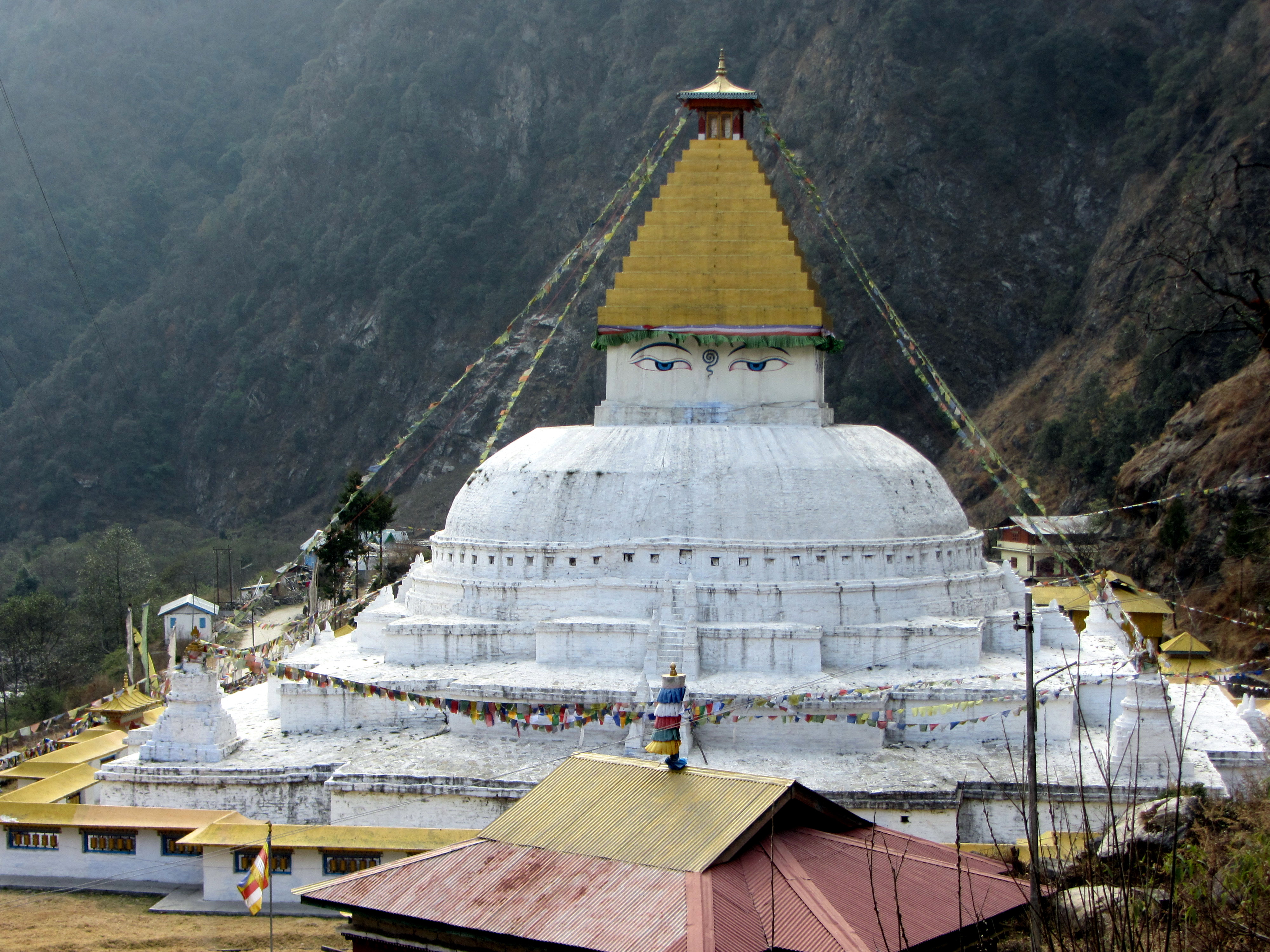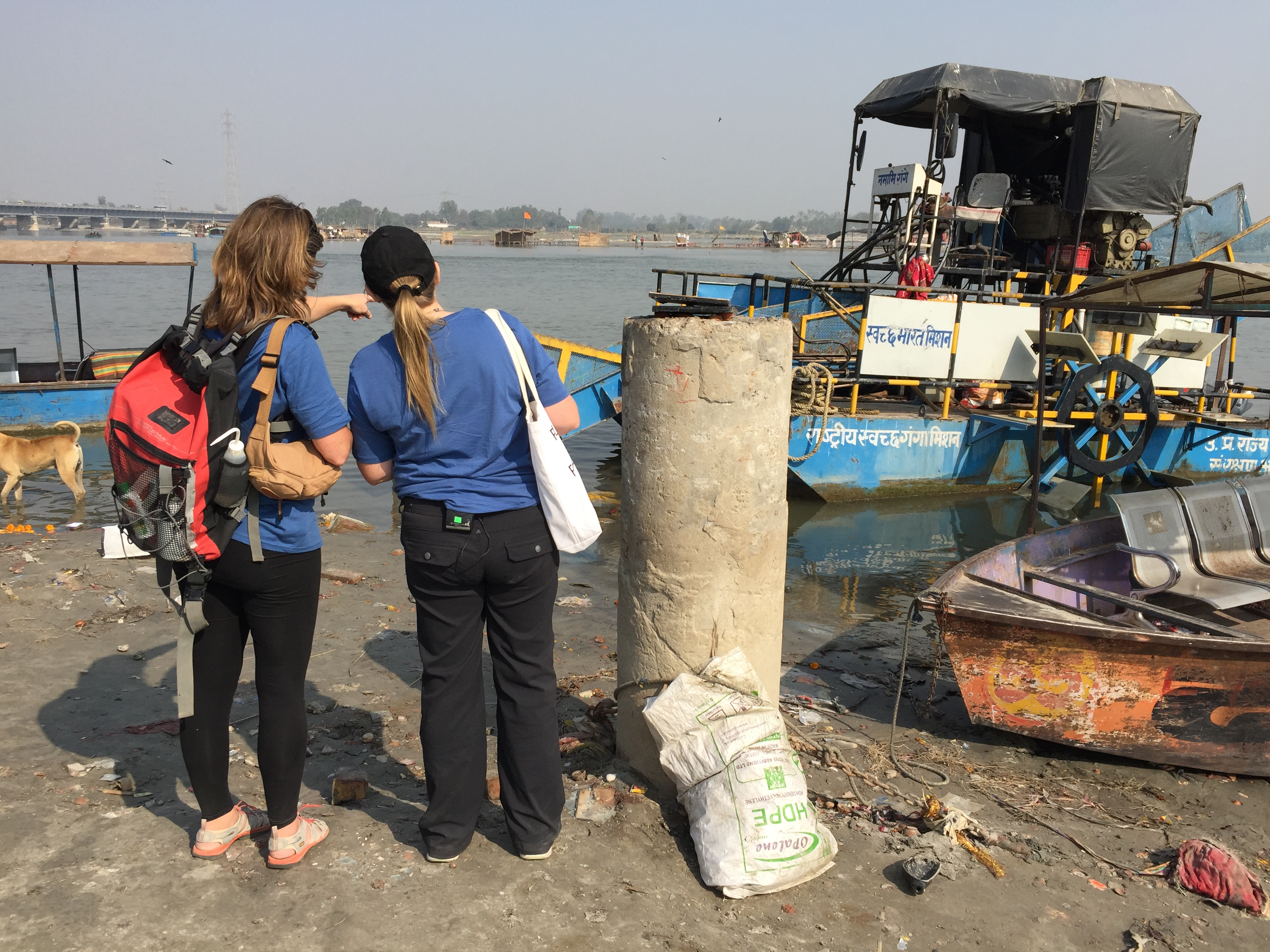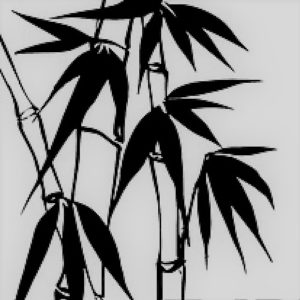Gorsam Chorten and AvalokGorsam Chorten and Avalokiteshwar statues catch you off guard
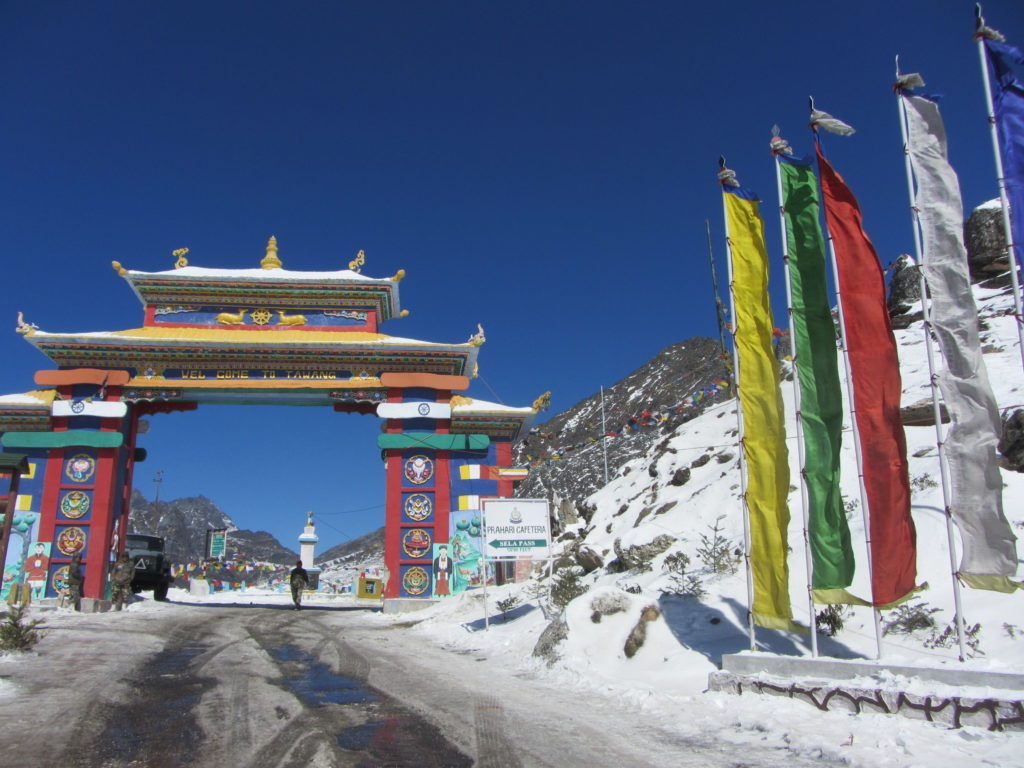
Black-necked cranes were the subject we were chasing, the reason why we were travelling to Zemithang, perched at about 8,000 feet deep inside the Eastern Himalayas. Nestled between Bhutan on the west and Tibet, China on the north, Zemithang, I was aware, is a fascinating place. But little was I aware that the small town – if the 100-odd houses spread across the many layers of the mountain fold can be called so – and its surroundings held a lot of secrets.
Situated at about 90 kms to the north-west of Tawang town, the headquarters of the Tawang district, Zemithang becomes the remotest place in that region which has a civilian administrative office. Otherwise, almost everywhere beyond it is just the Army.
Most tourists visit Tawang town, its four hundred years old monastery being the prime attraction apart from the Tawang War Memorial. On way is the popular Sela Pass at 13,600 feet and the Jaswant Garh, the memorial dedicated to army man Jaswant Singh who laid his life in the 62 war. But this was not a typical touristy visit and hence the journey beyond the conventional itinerary.
Even as we enjoyed the very scenic mountain journey in a sturdy vehicle, the bumpy road made its presence felt. The local activist poured in information about various aspects related to a proposed hydro-power project that was stalled by the National Green Tribunal (NGT) to save the wintering site of the black necked cranes in the Namjyang Chu valley near Zemithang. Northern stretches of Tawang and its neighbouring Bhutan are the few habitats left for this endangered species. It is a great site for birding.
From Tawang till Lumla was a typical up and down journey but after Lumla it was all a downhill ride till a small bridge crossing the Namjyang Chu and then we followed a narrow road on the river’s right bank. Small villages lined the snaking road stretch between the lofty mountains and the river rapids.
And then, as suddenly as it can be, we came across a pair of penetrating eyes painted on a giant stupa, appearing as a huge white pyramid from far away. The benevolent ‘All Seeing Eyes’ of the Buddha are painted on the stupa called ‘Gorsam Chorten’ in the local dialect of the Monpa people, who are Buddhist.
The rather peculiar shaped chorten comprises a circular base. Two octagonal platforms placed at cross angles form the next two layers of this uniquely constructed structure. The next layer of this complex and artistically designed edifice is a dome-shaped, stepped architecture which is sealed off by square-shaped roof, lending the almost 100-feet tall chorten its unusual geometrical look.
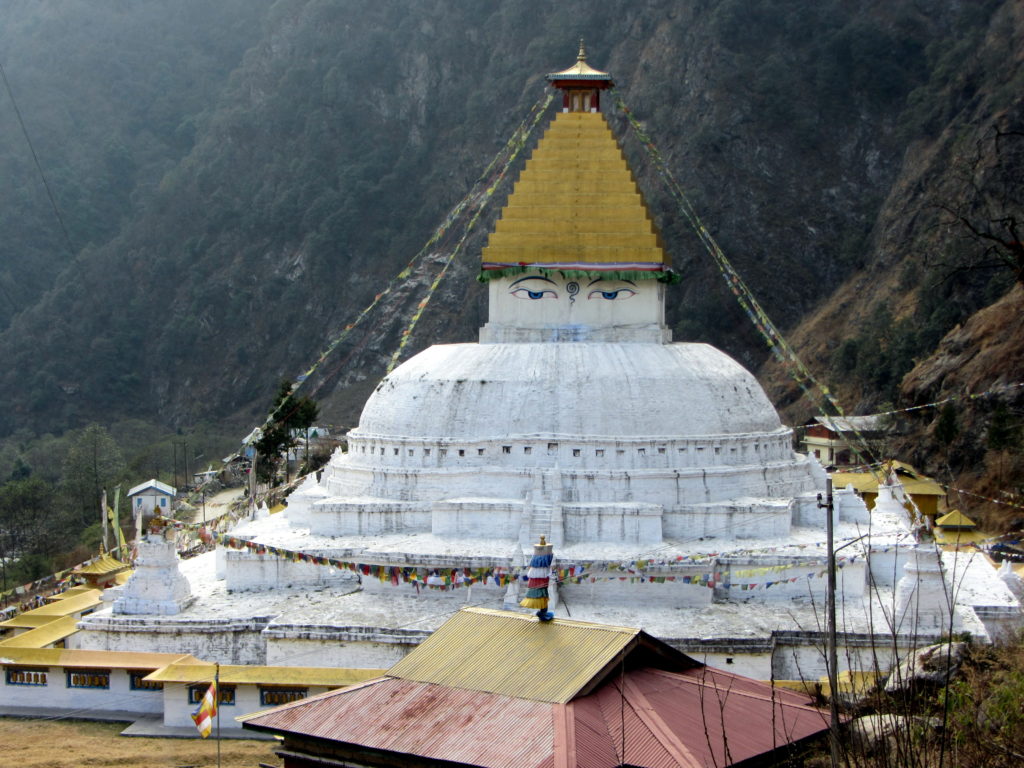
Thanks to eyes painted on the topmost layer, the well-travelled can instantly recall its similarity to the Swayambhunath Stupa in Nepal. There are many stories as to when it was exactly built and who built it? It is said to be a twin of a similar structure in Bhutan and that too has a legend behind it. The well-maintained present status belies the antiquity of this amazing structure, ranging from 13th century to 18th century depending on what is your source of information.
The Gorsam Chorten hosts a huge fair in the first month of the Buddhist lunar calendar. Devotees from across the border too throng this beautiful site. But at the time we went there, it was empty, giving an eerie feeling to find such a structure at an isolated place, as if silently standing guard with those piercing eyes. We were left wondering as to how the inside architecture would be.
Soon after we reached the Zemithang town, on the right bank of Namjyang Chu river. Streets were lined with fire wood neatly cut and arranged as Tawang is not yet connected to the central grid and burning logs is the only way Monpas can keep themselves warm in the harsh winters. To our amusement, many of the houses hanged meat pieces on the clotheslines along with washed clothes. The sun-dried meat is stored for monsoon days.
After a quick round of the village, we were back to the bridge. Upstream we could see the exposed sandy portion of the river floodplain. The bridge’s location would where the proposed run-of-the-river hydropower project would be located. No wonder environmentalists are all up in arms against the destruction of one of the few remaining habitats for the endangered birds.
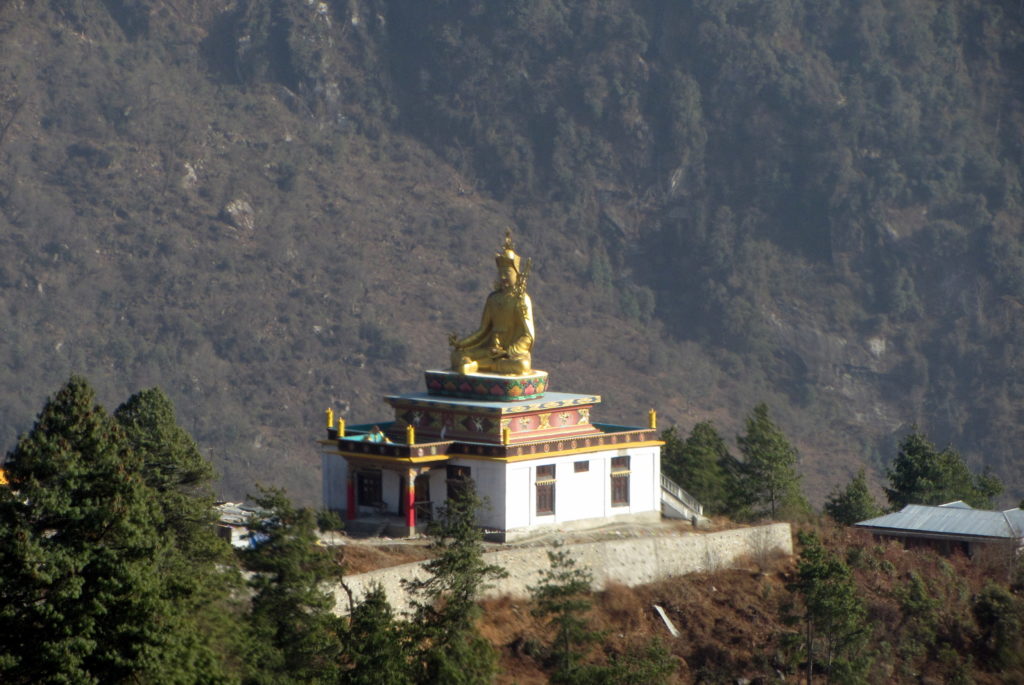
Our next stops were Muchut and Lumpo, two tiny hamlets up a zig-zag road. but even before we reached there, at one of the sharp hair pin bends, awaited yet another surprise. The local elected public representative had funded construction of a massive statue of Avalokiteshwara overlooking the Namjyang Chu valley. This is a recent addition to the landscape, like other huge Buddha and other statues that have sprouted across Tawang. Unlike earlier times, these are liberally built with cement concrete and coloured with acrylic paints.
A room served as a platform for the 20-odd feet golden painted statue that is surrounded by a terrace on all sides. One side offers a vantage point overlooking the Namjyang Chu valley. One gets a fantastic bird’s eye view of the whole valley with houses from Zemithang dotting the picturesque frame that has prayer flags fluttering in the air on the lower side and not so dense forest gleaming with fresh snow in between the pine trees on the higher side.
After this quick happy stop-over at the Avalokiteshwar statue, the zig-zag route further took us to Lumpo and Muchut. Perched atop a relatively smaller mountain surrounded by high and mighty snow-clad Himalayas, the two nearby villages are best showcases of how a community can put the interest of animal and bird species before their own. The two villages have unanimously decided they will not be cutting any trees from the core zone and the buffer zone of their water sources; they will not kill Red Panda, another endangered species that has few safe habitats left.
The serene surroundings, the lush greens against the azure blue sky and the sprinkling of traditional houses. A day trip from Tawang is just not enough. Especially with the knowledge that there are home stays, one is tempted to return.
We started the return journey with our hears yearning for more time in the pristine atmosphere. Passing by the Gorsam Chorten again, the ‘All Seeing Eye’ seemed to bless us. Was it also a reminder to come again?
How to reach:
Tawang can be reached by road via Guwahati, Tezpur and Dirang. Zemithang is about 90 kms from Tawang.
Infrequent public transport available from Tawang to reach Zemithang. But advisable is to hire your own vehicle.
(This story first appeared in the magazine Corporate Tycoons November 2018)
